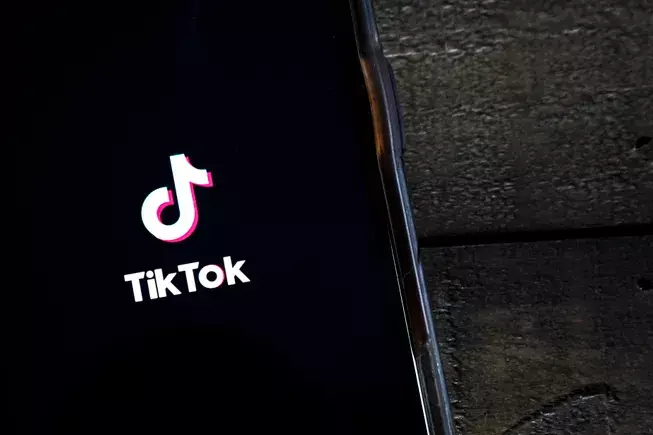In a landscape fraught with geopolitical tensions, TikTok is orchestrating a bold move to adapt to the ever-changing regulatory terrain by developing a dedicated US-specific version of its platform. This initiative, reportedly dubbed “M2,” aims to address concerns raised by U.S. authorities, particularly those revolving around national security and foreign influence. By creating a separate, localized version of TikTok, the company attempts to strike a delicate balance—maintaining user engagement and platform integrity while complying with legal demands. This strategic pivot exemplifies how major tech firms must innovate not just technically, but diplomatically, to preserve their global footprints.
The idea of a “split” app isn’t merely a technical update; it’s a geopolitical maneuver dressed up as a product change. The upcoming separate app is designed to de-couple American users from the global TikTok ecosystem, ostensibly allowing ByteDance to serve U.S. audiences under tighter regulatory oversight. This move could be viewed as an acknowledgement that the previous model—where the core algorithms and data control resided within China—no longer aligns with American regulatory standards. The challenge will be whether users will accept, or even notice, these structural separations. Moreover, the final details of how this re-engineered platform will differ in terms of content moderation, data security, and algorithm transparency remain eagerly awaited, but their implications could reshape the platform’s core user experience.
Implications of Regulatory Compliance and Control Negotiations
At the heart of the United States’ regulatory push is a complex battle over control. Legislation such as the “Protecting Americans from Foreign Adversary Controlled Applications Act” aims to curtail foreign influence, especially from China, by enforcing demands such as limiting foreign ownership and compelling transparency over algorithms. TikTok’s apparent solution—creating a US-only version—could serve as a hybrid strategy that satisfies U.S. legal requirements without surrendering complete control of its core product.
However, the core challenge remains: TikTok’s algorithm is its engine—in terms of driving user engagement, ad revenue, and content discovery. The Chinese government’s insistence that the algorithm remains inseparable from the app itself complicates negotiations. If ByteDance separates algorithm access from the main app to appease U.S. regulators, it risks diluting the platform’s core engagement mechanism. Conversely, if it can develop a localized version that maintains algorithmic integrity while conforming to U.S. restrictions, it might preserve its competitive edge without conceding full control. But such a delicate compromise hinges on nuanced governance—something that is far easier to theorize than to execute seamlessly.
The ongoing negotiations and the recent announcement of supposedly “trusted” buyer groups under Trump’s administration signal a calculated effort to avoid the outright ban or complete divestiture, both of which could devastate TikTok’s US market share. Whether this will result in a sustainable, balanced solution remains uncertain, but the stakes are high, with the future of the platform hanging in the balance.
The Political Chessboard and Its Impact on Future Tech Regulations
Recent political developments satisfy the narrative of a tech battleground where diplomacy, national security, and commercial interests intertwine. President Trump’s push for a quick sale of TikTok, claiming to have identified “wealthy” buyers, reflects a broader strategy to circumnavigate regulatory obstacles while safeguarding U.S. interests. The fact that the deal may be arriving just as the current executive orders expire underscores a tactical move—one that aims to keep TikTok accessible without falling into legal limbo.
The implications extend beyond mere ownership; they probe into issues of algorithmic transparency, data privacy, and foreign influence. The US government’s insistence on controlling certain elements of TikTok’s inner workings isn’t solely about national security; it’s also about setting precedents for how foreign technology giants operate within U.S. borders. If successful, this could fundamentally reshape the rules of global digital commerce, demanding greater control and accountability from foreign platforms.
Yet, there’s a lingering question: can a platform like TikTok truly satisfy U.S. regulators without compromising the essence that makes it so addictive? Will user experience suffer when algorithms are restrained or segmented? These are precisely the doubts that cloud the platform’s potential future and test the limits of regulatory compromise.
Balancing Innovation and Security in a Digital Age
As TikTok endeavors to reconcile its global ambitions with the demands of U.S. sovereignty, it reveals a broader truth about the digital age: innovation cannot be divorced from politics. The platform’s future hinges on navigating these treacherous waters without sacrificing user engagement—a feat that demands both technical finesse and strategic diplomacy.
The possible creation of a separate U.S. version may be a pragmatic step, but it could also symbolize fragmentation within the platform’s identity. Will American users notice any difference? Will the core appeal—its powerful algorithm-driven content discovery—remain intact? Or will the enforced separation dilute the platform’s unique capacity to captivate audiences? These questions highlight the core dilemma faced by platform designers confronting sovereignty issues: how to maintain the magic that keeps users hooked while respecting national security concerns.
TikTok’s strategic moves illustrate a vital lesson for the tech industry: in a world increasingly governed by geopolitical considerations, technological innovation must be paired with flexible policy adaptations. The coming months will be critical, as the platform’s success hinges on securing a delicate balance—one that could redefine how global platforms operate within a framework of national interests. The question remains whether TikTok, a trailblazer in content engagement, can also be a pioneer in navigating the complex landscape of digital sovereignty.


Leave a Reply